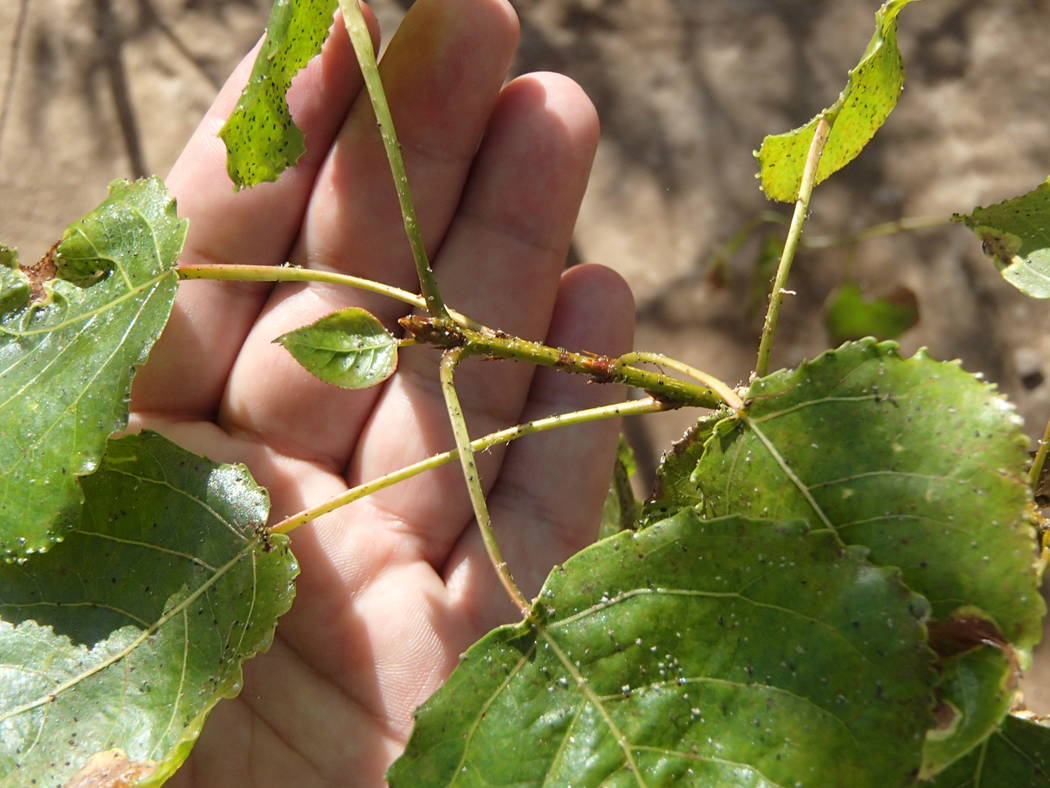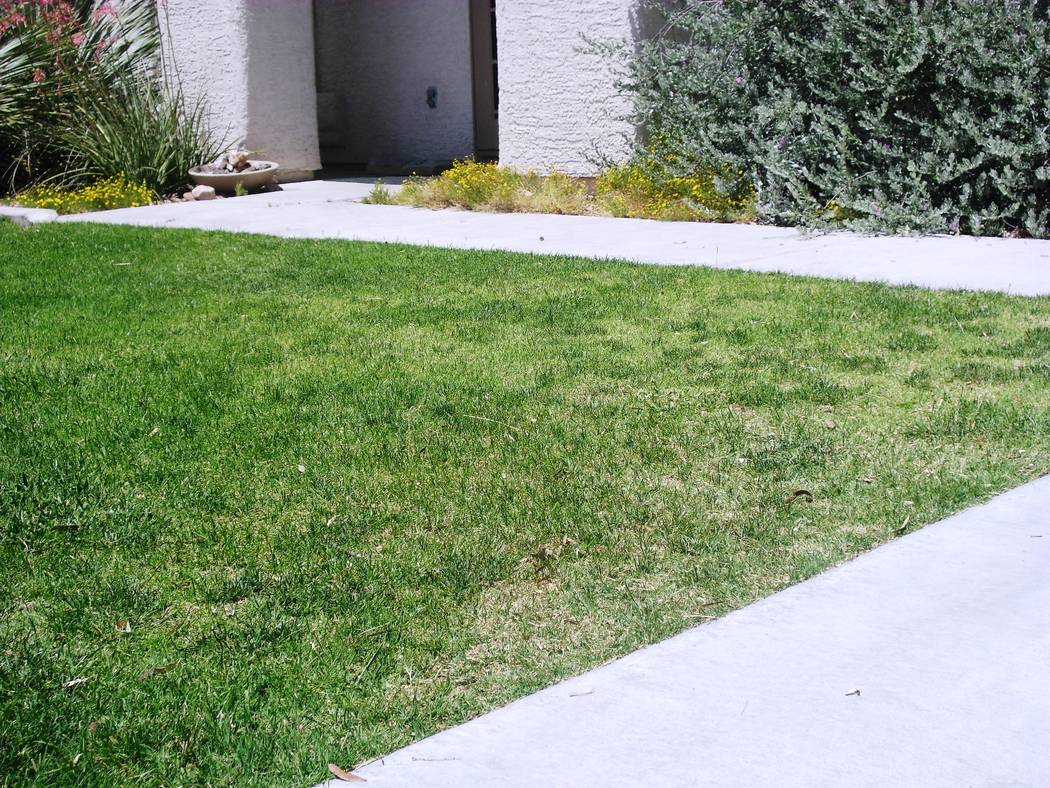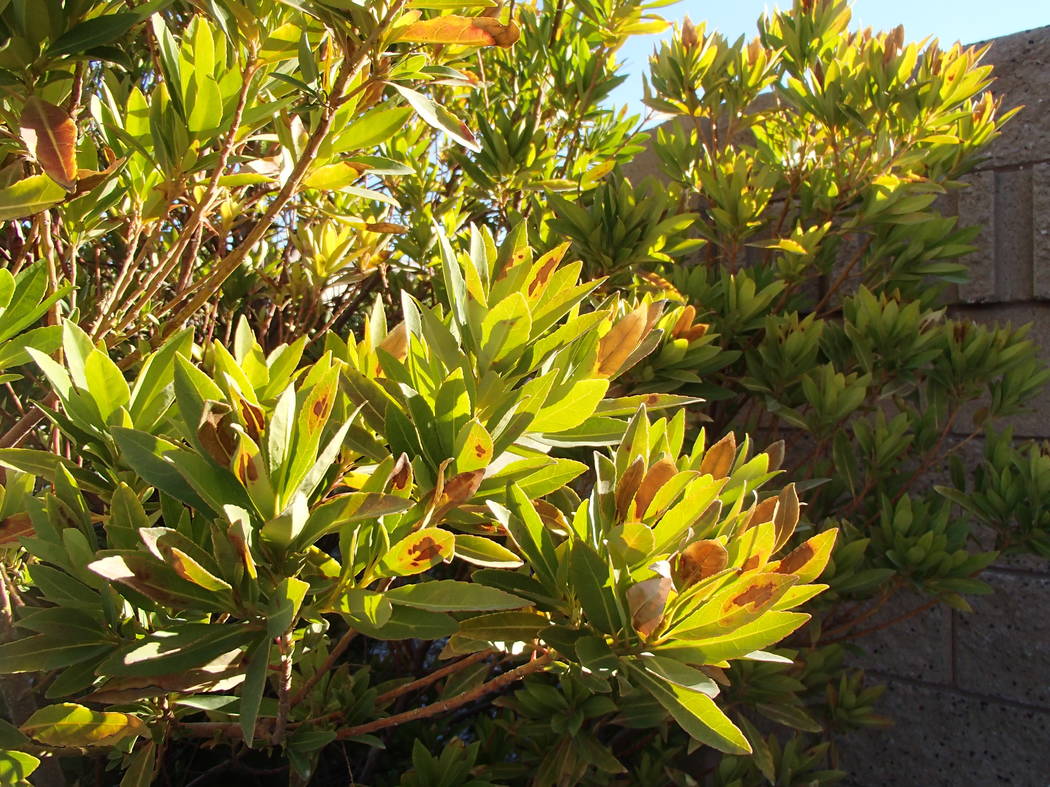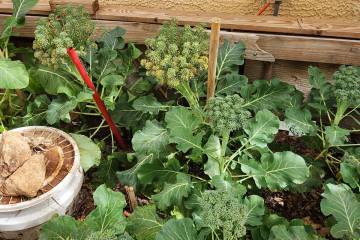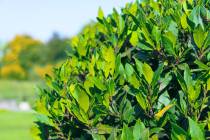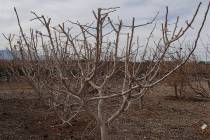Soap sprays leave no residue for returning aphids
Q: During the first year with my apricot tree, I sprayed it with soapy water to control aphids. Every day I check the leaves, but the apids never stop. Is this good a spray to use?
A: Soap sprays are good to make an immediate kill of an insect that you don’t expect to re-establish itself after you’re finished. The problem with aphids this time of year is that they will come back, usually in just a few days, after soap sprays have been applied.
The good thing about soap sprays is that they are safe for humans, pets and other large animals. The bad thing about soap sprays is they do not discriminate between good bugs and bad bugs. If it’s a bug and you spray it, it will die, good or bad.
The second negative about soap sprays is they have no residual. That means that soap sprays leave nothing behind to kill bugs after the spraying is done. Soap sprays rely on you, the applicator, respraying when needed.
You must be knowledgeable enough to spray the bad bugs but not the good bugs. It also requires that you find most or all of the bad bugs when you spray. If you don’t, they re-establish in a few days, and you must spray them again — and continue to spray them as long as you need to, over and over, until the problem is gone.
Aphids began infesting new growth, making more babies, as soon as the leaves popped out.
Mature female aphids that make it through the winter have wings. They can fly short distances to the new growth. These mother aphids never need a male aphid to produce their young, and they produce young very rapidly. They flew to the soft, succulent, sugary new growth and started laying eggs as soon as it came out and as fast as they could.
It just so happens that many ants like the sugary residue that aphids leave behind when they are feeding. Those ants that use sugar for raising their young absolutely love aphids and move them to different locations on plants so that they can farm them. Controlling ant colonies also helps to control aphid populations.
Next up the line of toxicity to aphids — as well as humans and the environment — are oils such as neem, rosemary and mint. And then there are the so-called “organic” or “natural” sprays like pyrethrins.
Pyrethrins are made from a type of chrysanthemum. If you feel safe with pyrethrins, you may choose to move to the synthetic pyrethrins that are everywhere in garden stores but are not considered natural or organic. They leave behind a residual and continue to kill insects after they have been sprayed.
Q: How do you control the weed poa annua or annual bluegrass?
A: Poa annua, or annual bluegrass, evolved in the past 50 years. In this way, I would compare it to the cockroach. This weed is easy to control in landscapes but extremely difficult to control in most lawns; it is difficult to control in fescue but easier in Bermuda grass lawns. If it is growing among trees and shrubs, it is easily controlled by suffocating it with mulch.
In fescue lawns, it is best controlled with specific herbicides aimed at killing the seed. The best herbicides focus on killing the seed as it germinates.
Annual bluegrass seed germinates toward the end of summer and produces seed during fall and winter months. This weed survives when mowed 1/4 inch or less, so mowing it short to kill it won’t work. It loves short, wet lawns. It also likes lawns that have a lot of foot traffic.
Find a weed killer for lawns that states it controls annual bluegrass. Make the first application in mid-July or early August. You will make a second or possibly a third application so that this control extends into the spring.
Read the label. It tells you how soon to make repeat applications and how much to apply.
These types of weed killers are called pre-emergent herbicides and slowly degrade over time. Repeat applications are made when previous applications are running out. Continue repeat applications all through the winter (if the label allows it) until early spring. That should kill most of the emerging seed.
If you see young plants that were missed by the weed killer (this weed is usually lighter green and grows faster than the surrounding grass), pull them by hand before they make seed. They will pull out easily, because they have very shallow roots.
In Bermuda grass lawns, kill it outright during the winter months after the grass has turned totally brown (dormant). After the Bermuda grass is dormant and mowed, spray the green parts of the lawn with Roundup herbicide.
Roundup kills the green annual bluegrass but not the Bermuda grass, because it is dormant. Many years ago, people used fire to great advantage on Bermuda grass, but this is no longer permitted. By the way, this is also an excellent way to control other weeds, including tall fescue growing in a Bermuda grass lawn.
Discourage annual bluegrass through lawn aeration (punching holes with a core aerator) and wait longer between irrigations during the late summer, fall and winter months.
Prevent annual bluegrass from getting established by not allowing people to walk on your lawn who were working on lawns loaded with annual bluegrass. This includes landscapers. Seed is transported on shoes that have walked across infested lawns.
It also is transported to your lawn on lawnmowers. If a lawnmower was used on a lawn infested with annual bluegrass, I guarantee 100 percent that this seed will get established in your lawn. Mowers should be cleaned thoroughly between lawns to slow the spread of weed seeds such as annual bluegrass, as well as diseases.
Q: I have several Carolina cherry trees in my yard. Last year, the leaves began turning brown and flaked off. Can you tell me why they are doing this and how I can correct the problem?
A: Let’s get one thing out of the way before we begin. It is called Carolina cherry laurel for a reason. This plant is native to the humid, wet climate and rich soils of the Southeast United States.
It is not native to dry, desert climate and barren soils of the Southwest United States. It struggles here compared to the Southeast. This plant requires extra care on your part when growing it here.
Add 50 percent decent compost to the soil mix when planting. Dig and amend a hole at least three times the width of the container. Five times is better.
If this wasn’t done at the time of planting, make vertical chimneys 2 feet deep and 2 to 3 feet from the tree trunk. Fill these chimneys with compost or a 50 percent mixture of compost and soil.
Covering the soil with rock up to the trunk is a bad idea. It will work for a few years until the soil amendment is gone, but eventually, these plants will pay the price. No, I take that back; you will pay the price. Plants that begin their name with “Carolina” or “Japanese” are going to struggle in our Mojave Desert environment.
This doesn’t mean “Don’t plant them.” It means be careful where in your landscape you place them and how you grow them. Plants that do not belong in the desert require more investment at planting, long-term care and money to grow them here than in their native habitat.
After planting them in a 50 percent mixture of compost and soil, cover the soil beneath their canopy with wood chips 3 to 4 inches deep. Wood chips should cover an area at least equal to the canopy spread of the plant.
This surface mulch will need a couple of inches of new mulch on top of it every three years or so. This is because the bottom layer dissolves or rots into wet soil beneath it over time.
This rotting of wood chips enriches the soil it touches and adds nutrients and biological activity to it. These are important ingredients to the long-term success of alien plants growing in our desert environment.
The discoloration and death along the margins of the leaves arise from a plant health problem. Improve the health of these plants, and they will be more tolerant of our desert conditions. Additions of compost and woodchip mulch to the soil surface will help.
Make sure that these plants are getting enough water from at least four locations around the trunk. These emitters should be about 18 inches from the trunk in a square pattern with the trunk at the center. They should be giving these plants enough water at each irrigation.
If these are drip emitters, they should be emitting water for enough minutes to allow it to drain 18 inches deep. Depending on the emitters, this could be 30 minutes to an hour.
Irrigation of large trees and shrubs should never be daily. Give large plants at least one day without irrigation, so that water can drain from the soil and the roots can breathe. The roots of these plants are very susceptible to suffocation, root rot, when soils remain wet and cannot drain adequately.
Bob Morris is a horticulture expert living and professor emeritus for the University of Nevada, Las Vegas. Visit his blog at xtremehorticulture.blogspot.com. Send questions to Extremehort@aol.com.



